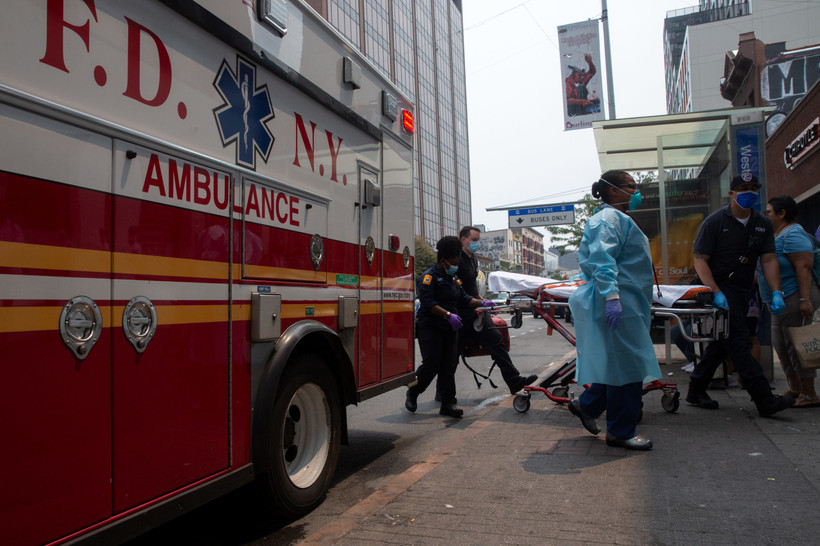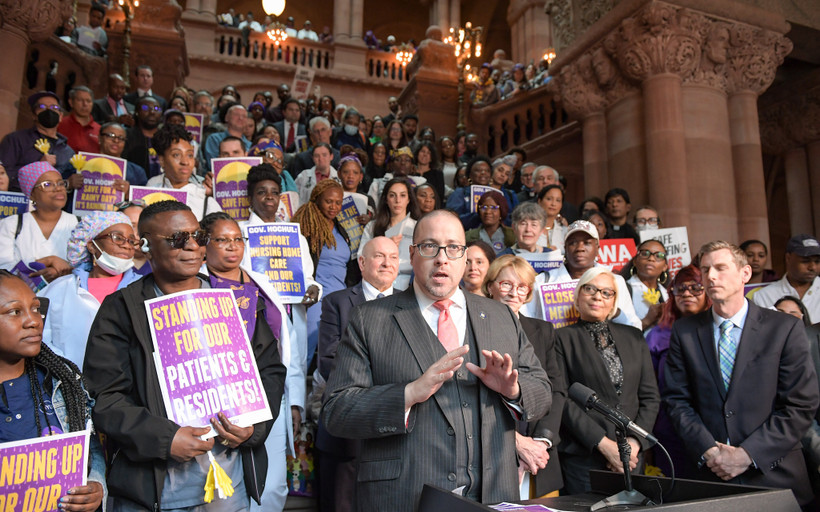City Employee Health Plan Could Switch to Lower-Cost Company Under New Proposal
Hundreds of thousands of city workers and their dependents could have their healthcare shifted to a cheaper plan by 2024, documents show.


Hochul’s proposed Medicaid cuts include $125 million from Health Homes, a program that connects the neediest New Yorkers with medical care, food assistance, and more.
Stark disparities in access to life-saving medication for opioid addiction persist between facilities — and racial groups.
New York legislators have a plan to claim billions in federal funding for health care, driving a fight between industry groups.
Previously unreleased disciplinary files expose officers who beat, slap, and pepper spray the residents they’re supposed to protect. Most are back at work within a month.
Referencing a New York Focus story, Assemblymember Jessica González-Rojas introduced legislation to prevent public agencies from naming the medically discredited condition in their reports.
In the New York City teachers union, anger over a plan to privatize retiree health care could send a longshot campaign over the edge.
Low-wage manual laborers can sue to make their bosses pay them weekly. Hochul’s late-breaking budget addition may undermine that right.
As real estate developers resist wage guarantees and try to roll back tenants’ rights, a potential budget deal is at an impasse.
As the state legislature considers a bill to change warranty payments, unions join their bosses to make car companies pay more.


